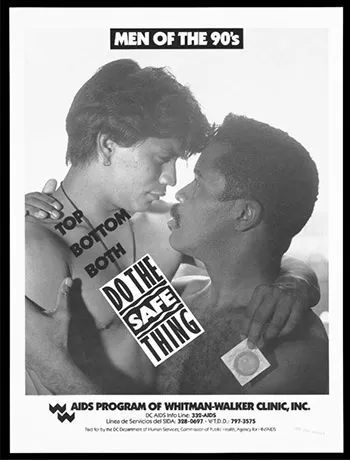In each stage of the HIV/AIDS epidemic, messages of shame, discrimination, and stigma have seemed to shout louder than reason, understanding, and liberation. This is a deadly mix.
Yet to focus on pleasure in an epidemic seems counterintuitive, even irresponsible and indulgent. In the fight against new HIV infections, however, it is nonetheless indispensable.
Long concentrated on risk and prevention, the fight against HIV must turn to the use of pleasure as a tool in its armory. When approached responsibly and inclusively, it is a powerful force for both ending the HIV/AIDS epidemic and shaping healthier and more resilient communities.
In the context of the global west, where HIV disproportionately impacts Queer communities, pleasure is a game-changer in the pursuit of a world without new infections. Recognizing and embracing the diverse ways in which people experience it allows us to create targeted, effective strategies that go beyond mere risk reduction.

Pleasure and safety are not mutually exclusive
In response to the AIDS crisis in the 1980s and 1990s, community leaders and public health officials homed in on the role that sexual behaviors play in transmitting HIV. Community-based activism and work led to the development of safer sex practices, including pushing for unyielding condom use, and making experimental drugs available to AIDS patients. These efforts were heroic and life-saving.
However, the landscape of medical science around HIV has changed over the last five decades. Traditional prevention strategies focus on restraint, with messaging that encourages partner reduction and barrier forms of protection, which, however well-meaning and seemingly straightforward, can reinforce the shame, stigma, and guilt Queer people have already had thrust on them. The answer to a sexual health crisis, these approaches seem to say, is to hold sexuality itself in suspicion.
Instead, a pleasure-inclusive approach looks different depending on the community and individual, but they deemphasize specific "mandatory" behaviors and allow people to craft prevention strategies that fit their sexual lives.
For example, those who see condoms as a barrier to sexual enjoyment may find their needs better fit through pre-exposure prophylaxis (PrEP, the use of an antiretroviral to prevent HIV infection), a newer strategy called doxy-PEP (the use of a common antibiotic to prevent bacterial STI infection after an unprotected encounter), and frequent STI testing. Those who prefer having multiple sexual partners are given the information and tools needed to make decisions concerning their sexual health and well-being.
The power of pleasure in sexual health
An embrace of sexual enjoyment has a profound impact on behavior. Pleasure-focused approaches acknowledge that people are more likely to adopt and maintain safer practices when they align with their desires and preferences.
For instance, a 2017 study published in The Lancet HIV found that those who perceived PrEP as enhancing sexual enjoyment were more likely to adhere to the regimen.
Pleasure-centered approaches to PrEP outreach ensure that people understand how this tool enhances satisfaction and minimizes anxiety. Research conducted by the National Agency for AIDS Research (ANRS), in its 2015 community-based IPERGAY trial across France and Canada, demonstrates that interventions emphasizing pleasure can lead to more sustainable changes in sexual behavior.
These results appear in a 2022 systematic review of 16 studies on HIV prevention in the Journal of Sex Research called "Pleasure and PrEP," which argues that "a primary message to persons who are at elevated risk for HIV has been to focus on risk reduction, sexual risk behaviors, and continued condom use, rarely capitalizing on the positive impact on sexuality, intimacy, and relationships that PrEP affords."
When the conversation around HIV prevention takes pleasure into account, it becomes an inclusive and affirming dialogue, not a top-down list of rules and restrictions to follow. It uses an embrace of Queer sexuality as a starting point, fostering an environment in which people feel supported in seeking testing, treatment, and prevention options.

A pleasure-inclusive future
Ultimately, embracing pleasure as a core component of HIV prevention is not just about promoting healthier sexual practices but about recognizing the inherent dignity and agency of those in the Queer community.
We must acknowledge that pleasure – including sexual enjoyment – is an indispensable aspect of the human experience. By incorporating it into HIV prevention outreach, we create a more inclusive and empowering narrative, one that resonates with the lived experiences of those most affected by the epidemic.
Through a pleasure-centered approach, we can forge a path toward a future in which new HIV infections are a thing of the past, grounded in the resilience, strength, and joy of the communities most impacted.
Teddy MacQuarrie is a PhD student in human sexuality at the California Institute of Integral Studies and a resident of Seattle. His research focuses on the social impacts of trauma in Gay communities.


